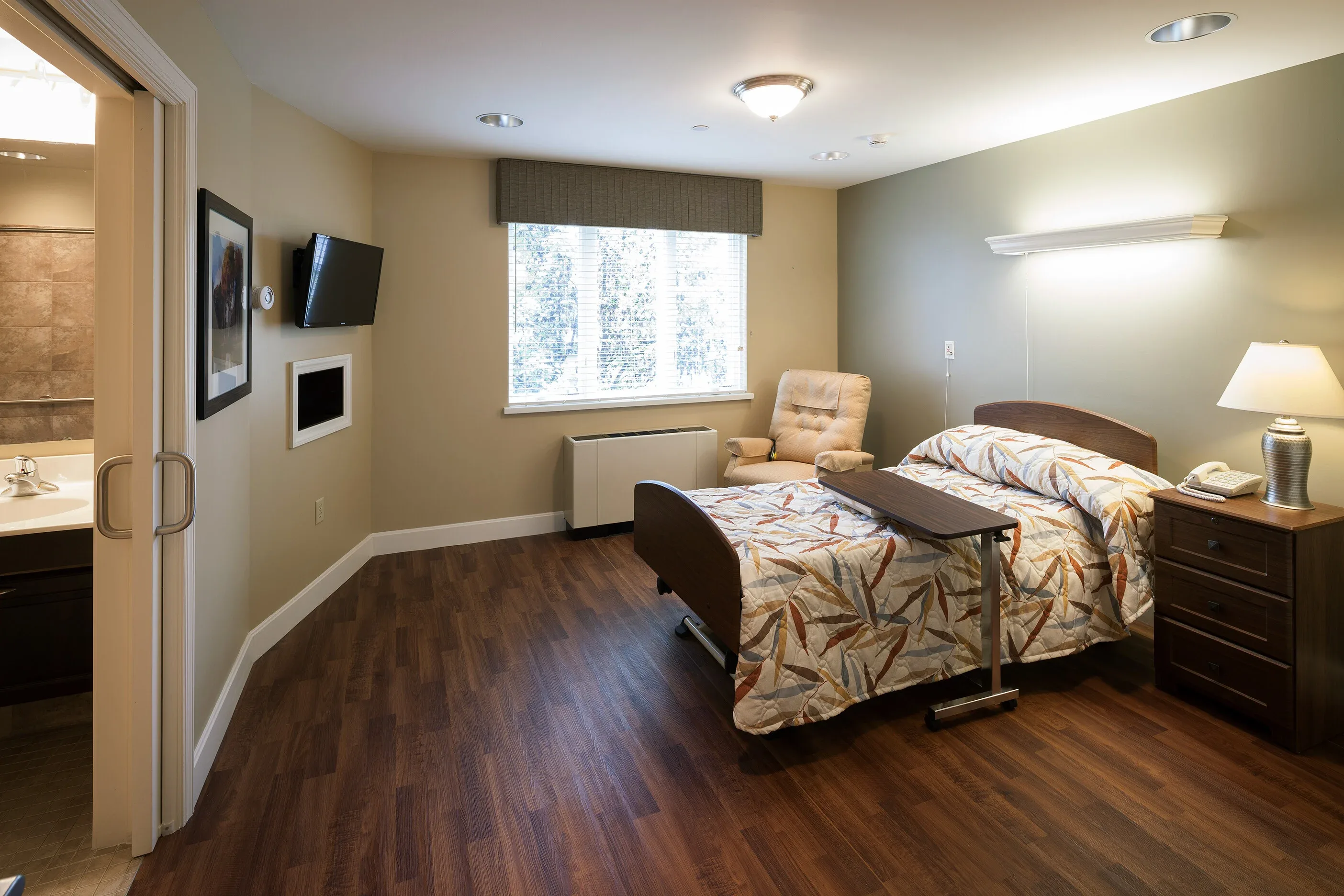Key Takeaways
- The current prevalence of shared rooms in Skilled Nursing Facilities represents an outdated model that compromises patient care, as shared spaces increase infection transmission risks and impede recovery through sleep disruption and increased stress.
- Private rooms have been shown to reduce healthcare-associated infections, minimize the need for disruptive patient transfers, and enable more effective infection control protocols, making them particularly crucial in light of lessons learned from the COVID-19 pandemic.
- Research demonstrates that patients in private rooms experience faster recovery times and lower rehospitalization rates, primarily due to better sleep quality, reduced stress levels, and more effective interactions with healthcare providers.
- A comprehensive policy approach is needed, combining mandates for private rooms for Medicare Part A residents with adjusted reimbursement rates and infrastructure investment support to help facilities transition to this model.
Introduction
Skilled Nursing Facilities (SNFs) play a critical role in post-acute care, helping patients recover from surgeries, strokes, infections, and other serious medical conditions. To achieve the best possible outcomes, Medicare Part A beneficiaries should receive care in private rooms.
An Outdated System That Fails Patients
The current SNF model remains driven by outdated financial incentives rather than modern clinical standards. Many SNFs rely on semi-private rooms to maximize reimbursement potential, despite clear evidence that shared rooms:
• Increase infection transmission risk.
• Prolong recovery times due to sleep disruption and stress.
• Contribute to unnecessary rehospitalizations.
Across the healthcare continuum, there is growing recognition of the advantages of private rooms for infection control, patient well-being, and improved clinical outcomes. Hospitals, for example, have increasingly moved toward single-patient rooms in new construction and renovations due to these benefits. While the transition has not been universal, many healthcare leaders acknowledge that private rooms should be the standard for patient safety, comfort, and recovery. SNFs must align with this evolving best practice to ensure optimal care for short-term post-acute patients.
Private Rooms as a Clinical Standard
1. Improved Infection Control and Public Health Outcomes
The COVID-19 pandemic underscored the importance of private rooms in limiting disease transmission. However, infection control benefits extend well beyond COVID-19.
- Lower risk of healthcare-associated infections (HAIs): Studies confirm that private rooms reduce transmission rates of MRSA, VRE, C. difficile, pseudomonas, and other multi-drug-resistant organisms (MDROs).
- Reduced need for disruptive transfers: In shared rooms, if a patient is exposed to an infected roommate, they often require relocation, increasing disease spread and disrupting care. Private rooms eliminate this risk by allowing isolation in place.
- Better outbreak management: Private rooms enable more effective infection control protocols, minimizing cross-contamination and reducing staff burden.
2. Faster Recovery & Reduced Rehospitalization
Stress and sleep deprivation are major barriers to recovery. Clinical studies show that:
- Noise and interruptions from roommates significantly reduce sleep quality, leading to slower healing, cognitive impairment, and increased fall risk.
- Reduced stress contributes to better clinical outcomes: Private rooms lower patient anxiety, which has been linked to improved cardiovascular and immune function.
- Lower rates of rehospitalization: Patients recovering in private rooms experience fewer complications, leading to a reduced likelihood of readmission to acute care settings.
3. Enhanced Dignity and Patient Experience
- More effective physician and therapist interactions: Private rooms allow for more confidential and focused clinical discussions.
- Greater flexibility in care planning: Single-occupancy rooms allow staff to adapt care to individual patient needs without worrying about the impact on a roommate.
- Improved patient satisfaction: Research consistently shows that patients prefer private rooms, and higher satisfaction scores are linked to better compliance with post-discharge care plans.
Policy Recommendations
To modernize SNF care and ensure Medicare beneficiaries receive the best possible post-acute treatment, the following policies should be implemented:
1. Mandate Private Rooms for All Medicare Part A Residents
- SNFs should be required to provide private rooms for all Medicare Part A residents.
- This policy ensures that all short-term SNF patients receive the highest standard of care, reducing infection risk and improving recovery outcomes.
2. Adjust Medicare Reimbursement to Incentivize Private Rooms
- Full Medicare Part A reimbursement should apply only to private-room stays.
- If a facility places a Medicare Part A resident in a semi-private room, reimbursement should be reduced (e.g., by 25%).
- This phased approach encourages SNFs to invest in private rooms while allowing for a transitional period.
3. Support Facility Modernization & Infrastructure Investment
- Federal and state funding should support SNFs in transitioning to private-room models.
- Regulatory incentives should reward SNFs that prioritize private-room capacity.
Meeting the Future with a System that Works
The U.S. healthcare system has increasingly recognized the benefits of private rooms, particularly for infection control and recovery outcomes. Skilled nursing facilities must align with this best practice to provide Medicare Part A beneficiaries with the highest standard of care. A modern SNF model must:
✅ Reduce infection risks through better isolation practices.
✅ Improve recovery times by minimizing stress and sleep disturbances.
✅ Align with evolving patient expectations and clinical best practices.
Mandating private rooms for Medicare Part A SNF residents is not just an improvement—it is a necessary step toward ensuring that short-term rehabilitation and recovery care meet the highest medical standards. The time to act is now.



